Text
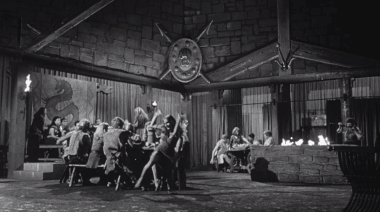




The Saga of the Viking Women and Their Voyage to the Waters of the Great Sea Serpent (1958)
#the viking women and the sea serpent gif#dance number gif#roger corman#b-movies#the saga of the viking women and their voyage to the waters of the great sea serpent#50s fantasy movies#wilda taylor#1950s#1958#gif#chronoscaph gif
273 notes
·
View notes
Text

Den som väntar på något gott väntar aldrig för länge. @kulturdasset lär bli mäkta imponerad av några av månadens filmval. Det är klart. Värt att vänta på vad det också. 😜
65 (2023) [👍] Riktigt bra SF om en utomjording som hamnar på jorden under dinosauriernas regim.
Australiens (2014) [👎🆓] En budgetstinkare från Australien. Går på komisk knock men svingar vilt i luften.
Dungeons & Dragons: Honor Among Thieves (2023) [👍🔁]
Grease Live! (2016) [👍🎭🔁]
Hairspray Live! (2016) [👍🎭🔁]
Hocus Pocus 2 (2023) [👍🔁]
Kapten Våghals / Captain Scarlett (1952) [🆓] Intressant, och mot alla odds, kombination av Robin Hood och Röda Nejlikan. Hollywood! Vi vill ha en remake franchise!
Lair, the (2022) [__] Neil Marshall, åter i samarbete med Charlotte Kirk, och precis som i The Reckoning inte dåligt men når heller inte riktigt ända fram.
Lost City, the (2022) [👍🔁]
Love of Three Queens / L'amante di Paride (1954) [👎🆓] Spretigt sömnpiller med Hedy Lamarr.
Mord i Venedig / A Haunting in Venice (2023) [👎] När jag tänker tillbaka till Kenneth Branagh föregående exkursion som Poirot (Döden på Nilen, 2020) kommer beskrivningen ”välpolerad yta och dyra färger” för mig. Men vad gör man inte för Michelle Yeoh liksom?
Saga of the Viking Women and Their Voyage to the Waters of the Great Sea Serpent, the (1957) [🔁🆓] Vikingraffel signerat Roger Corman. Den här hade jag tydligen sett tidigare... Ett upptäckt som är ett omdöme i sig.
Ski Troop Attack (1960) [🆓] Skidåkarraffel signerat Roger Corman, han har verkligen fått till det i den här filmen. Om oinspirerat sidåkar-pang-pang är vad man längtar efter. Jag tror storyn tog en annan nedfart, för den minns jag inte mycket av.
Totally Killer (2023) [👍] Hallå, hej! Amazon får till en underhållande liten skräckkomedi som andas klassiska grepp och tillbaka till framtiden. Me like! Kommer antagligen ses igen.
Vidioten / UHF (1989) [__] Idag kanske mer ett underhållande tidsdokument om tiden innan YouTube gjorde videostjärnor av svenssons.
WarGames (1983) [👍🔁] Idag, i skuggan av AI kanske ännu mer aktuell än någonsin. Står fortfarande stadigt utan behov av remakes. Lekte med tanken att se uppföljaren, tills jag såg att den bara fanns på hyr-tjänsterna.
@kulturdasset lär börja drägla över husguden Neil Marshalls senaste, hen bör dock trycka på play där med något nedskruvade förväntningar. Resten tycker jag skall ge Totally Killer eller Kapten Våghals en chans. Den senare är kanske inte A-klassad underhållning, men väl värd en chans.
För den nyfikne med ett sug efter en utmaning såg jag the Reckoning i februari 2021.
#månadens filmer#senast sedda film#65#Australiens#Dungeons & Dragons: Honor Among Thieves#Grease Live!#Hairspray Live!#Hocus Pocus 2#Kapten Våghals#Captain Scarlett#The Lair#the Lost City#Love of Three Queens#L'amante di Paride#Mord i Venedig#A Haunting in Venice#the Saga of the Viking Women and Their Voyage to the Waters of the Great Sea Serpent#Ski Troop Attack#Totally Killer#Vidioten#UHF#WarGames#senast sedda filmer#The Viking Women and the Sea Serpent
46 notes
·
View notes
Text
Viking Women And The Sea Serpent | Episode 420
New Post has been published on https://esonetwork.com/viking-women-and-the-sea-serpent/
Viking Women And The Sea Serpent | Episode 420

Jim looks back on a 1958 Roger Corman classic, “Viking Women and The Sea Serpent,” starring Abby Dalton, Susan Cabot, Richard Devon, Jonathan Haze, June Kenney, Bradford Jackson, Betsy Jones-Moreland, Jay Sayer, Sally Todd, Mike Forrest, and Gary Conway. Viking women go on a quest to find their men after they fail to return from a journey. Along the way they encounter a large sea serpent and end up on an unknown island. Find out more on this episode of MONSTER ATTACK!, The Podcast Dedicated To Old Monster Movies.
#Abby Dalton#Betsy Jones-Moreland#Bradford Jackson#ESO Network#Gary Conway#geek podcast#Geek Talk#Jay Sayer#Jim Adams#Jonathan Haze#June Kenney#Mike Forrest#Monster Attack!#nerd podcast#Old Monster Movie#Richard Devon#Roger Corman#Sally Todd#Susan Cabot#The ESO Network#The Saga Of The Viking Women And Their Voyage To The Waters Of The Great Sea Serpent#Viking Women and The Sea Serpent
0 notes
Text
I liked the part with the giant mallet.
A viking movie with a fundamental misunderstanding of what vikings were and negative historic accuracy. The crew were visible in a modern boat before the cameraman noticed and panned away, attack dogs wore modern collars, they lit a pyre with a trail of gunpowder, and although I missed this one, according to the imdb goofs page one of the viking women was wearing sunglasses.
The plot was dull as rocks, with the serpent barely factoring in, and every line of dialogue had atrociously bad delivery. I can't remember a single character's name. The only memorable characters were evil Brunette Witch who was actually good, and the prince who seemed rather more of a queen by affectation.
The best part of the movie, hands down, was when the rudder fell of their shitty boat and they decided to write it into the script that the women somehow pressed on without a rudder, rather than turn around less than a minute after launching the boat.
Terrible. Not even bad in a funny way.
#the saga of the viking women and their voyage to the waters of the great sea serpent#the saga of the viking women and their voyage to the waters of the great sea serpent 1957#movie review#a title that simply rolls of the tongue
0 notes
Text
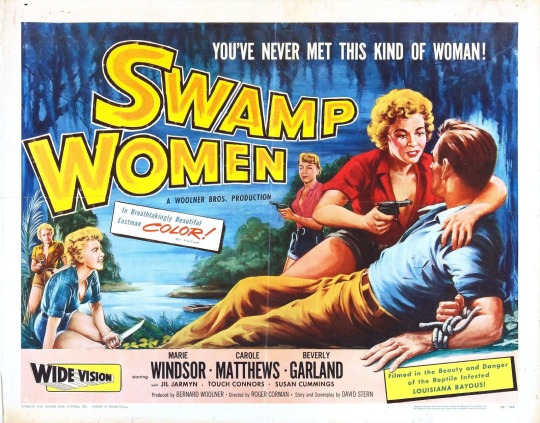
How great to see the outpouring of affection for wildly influential and prolific high potentate of low-budget cinema Roger Corman (5 April 1926 - 9 May 2024). The maverick director, producer, actor, author of How I Made a Hundred Movies and Never Lost a Dime (1990) and self-described “Orson Welles of the Z movie” died this weekend aged 98. I totally get why obituaries are focusing on Corman’s discovery and mentorship of A-list Hollywood figures like Jonathan Demme, Martin Scorsese, Peter Bogdanovich, Frances Ford Coppola, Jack Nicholson, and Robert De Niro early in their careers, but I’m far more interested in Corman’s own lurid juicy filmography. Who else would title a movie The Saga of the Viking Women and Their Voyage to the Waters of the Great Sea Serpent (1958)? It feels like only yesterday I was raving about The Wasp Woman (1959). I urgently need to revisit Sorority Girl (1957)! And I’ll always remember that the very first time I entered London’s much-missed, long-defunct, life-changing Scala Cinema in Kings Cross in the early 90s, it was to see a double bill of Corman’s biker movie The Wild Angels (1966) with Girl on a Motorcycle (1968). Now I’m yearning to properly delve into Corman’s fifties juvenile delinquent flicks like Rock All Night and Teenage Doll (both 1957). In the meantime, I recommend Swamp Women (1956) (Tagline: “Flaming Passions! Weird Adventure! Women with a Lust for Men!”). Like many a fun movie, it starts with tough-as-nails female convicts busting out of a women’s prison. Shot on location in Louisiana (or, as the poster promises, “Filmed in the beauty and danger of the reptile infested Louisiana bayous!”), Swamp Women features a desperate hunt for a stash of missing diamonds, Mike Connors in bondage, exploitation movie queens Marie Windsor and Beverly Garland in starring roles and alligators! Swamp Women is easy to find on YouTube.
#roger corman#b movie#exploitation film#exploitation movie#exploitation cinema#swamp women#lobotomy room#bad movies for bad people
10 notes
·
View notes
Text
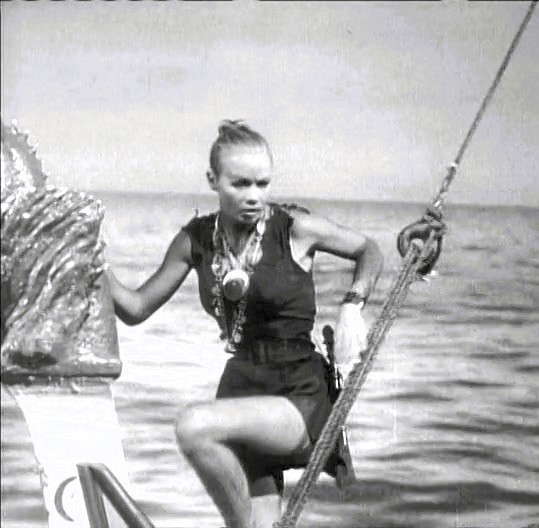
Abby Dalton "Las mujeres vikingo y la serpiente del mar" (The saga of the viking women and their voyage to the waters of the great sea serpent) 1957, de Roger Corman.
3 notes
·
View notes
Text

#Movies I have watched this year!
Alone in the Dark 2005 The Big Sleep 1978 Birdemic 2010 Bleed with Me 2020 Blood Red Moon 2010 Book of Blood 2010 Bulldog Drummond Escapes 1937 Gamera vs Zigra 1971 The Saga of the Viking Women and Their Voyage to the Waters of The Great Sea Serpent 1957
0 notes
Photo
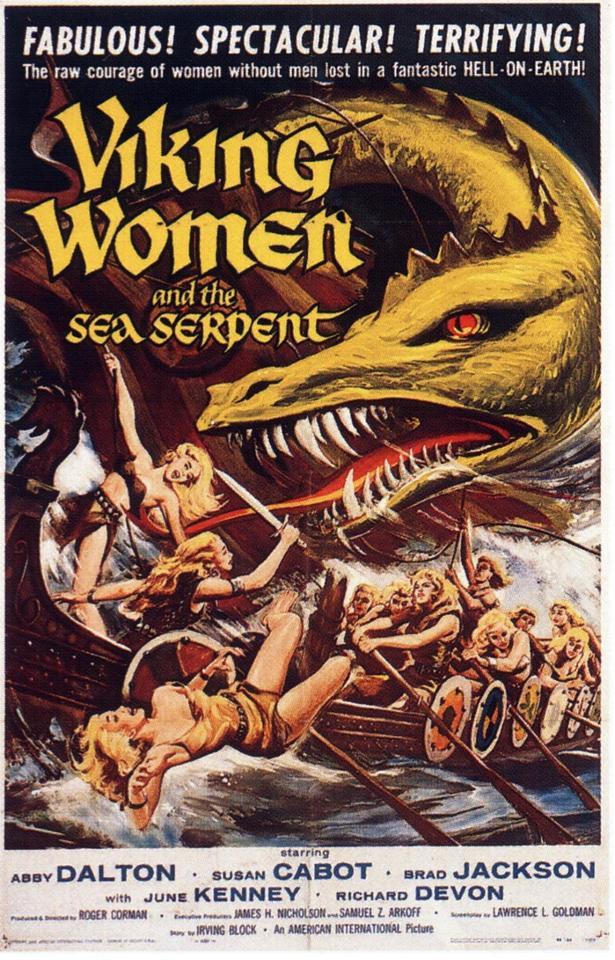
#The Saga of the Viking Women and Their Voyage to the Waters of the Great Sea Serpent#movie poster#roger corman
6 notes
·
View notes
Photo
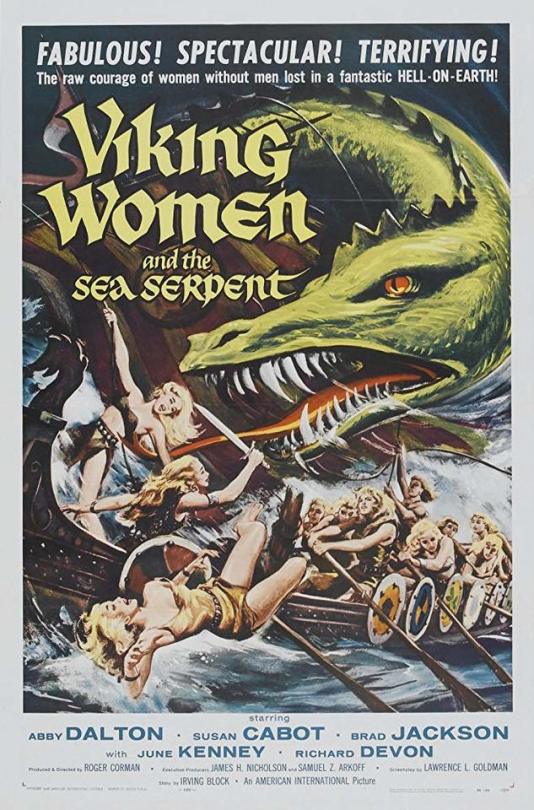
#The Saga of the Viking Women and Their Voyage to the Waters of the Great Sea Serpent#cinema#movies watched
0 notes
Text
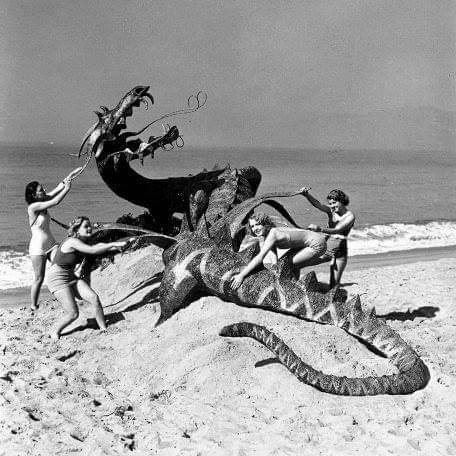
The Saga of The Viking Women & Their Voyage To The Waters of The Great Sea Serpent
7 notes
·
View notes
Text
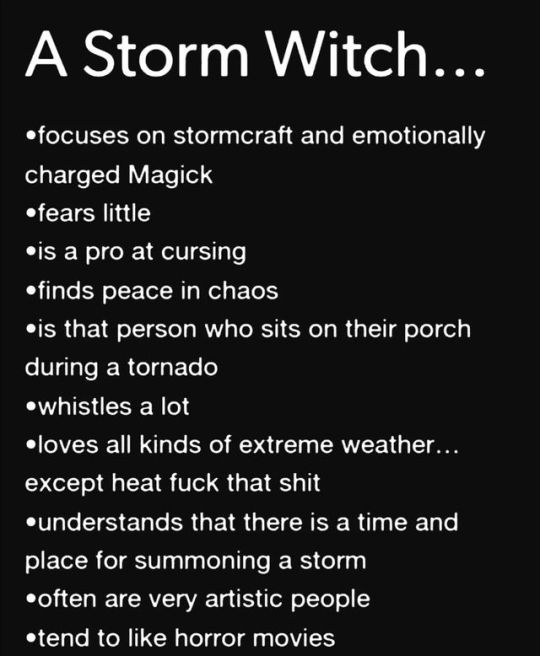
Exemplore»
Magic
Storm Callers - The Art of Weather Magic
Updated on April 16, 2017
Pollyanna Jones
"Many tales were bruited about the power of witches and wizards over storms, weapons, spirits, love, and death. I have been assured that at this day the country folk, some of them at least, tremble at the sight of one of these gifted persons, or persons of such repute, lest by some chance the sorcerers eye lighting on them should kindle in him a dislike." – Rev Oswald Cockayne, 1864
The weather. Most unpredictable, and most important to those living off the land, efforts have been made throughout the ages to predict and even control the sun, wind, and rain. Good weather would ensure a plentiful harvest and safe travels, whilst a wet summer or particularly harsh drought would doom a community to starvation and suffering. Even today, extreme weather events affect us profoundly, claiming lives each year. So it is no wonder that throughout the ages, man has tried to influence the elements around him.
Tales of magical manipulation of the weather appear all over Europe, and appear in the Sagas as well as Saxon records. Even today, we utter charms to ensure good weather.
"Rain, rain, go away.
Come again another day."
~ Traditional English proverb, charm for good weather.
Appeasing the Sea
It would seem that some of Britain's earliest superstitions around the sea and weather came to our shores with the Norsemen.
The goddess Rán, one of the deities who ruled the domain of the sea, would catch any who fell overboard with her net. The Helgakviða Hjörvarðssonar Edda describes how she receives those drowned at sea, luring men into the water and sinking ships with her daughters, the waves. As a result, many Norsemen would carry gold with them on a voyage, to appease Rán in the unfortunate event they drowned.
This superstition was carried through right up to the present day; it is believed placing a gold coin under the mast will bring good luck and works as a talisman against stormy weather.
Rán's Embrace | Source
Taming the Tempests
The goddess Rán was the least of their worries though. With the sea being the main transport route of the time, the Norse were vulnerable to the elements, and many accounts speak of how magical forces were at work as a weapon against those sailing the seas. Snorri Sturluson wrote, in Heimskringla:
"King Hakon lay in the Southern Isles, the Hebrides, St Michaels mass fell on a Saturday and on the Monday night, that is, the night before Monday, came a mickle storm with wild fury, and drove a cock boat and a long ship upon the coast of Scotland. On Monday the storm was so fierce that some cut away their masts and some ships drove. The kings ship drove also into the sound, and there were seven anchors out, and at last the eighth, which was the biggest, but she drove notwithstanding. A little later the anchor held fast. So mickle was this storm that the men said it was the work of enchantment, and one made upon it these skaldic verses:-
"There met the much scarching
Maintainer of war
The sorcerers arts
Of Scotlands warlocks.
Roaring the raging sea
Drove with its fair sails
Many a proud ship
Of the beah giver
Broken on land.
Blew with its loud blasts
On the brine skimmers
Full fraught with warriors
Fiercely the sea storm
Stirred up by the wizards.
Up on to Scotland
Scattered and tossed
Broad barking billows
Threw brave men of battle
With shields and war gear
Shivered and torn.""
The weather magic of the warlocks of Scotland was at play, denying many a brave warrior his place in Valhalla.
In this piece entitled "Vikings", a ship of Norsemen battle through a storm at sea. | Source
Another instance of Scottish magic being used against the Norse can be found in the folktale, "Pitchpine: The Norse King's Sorcerous Daughter":
"As they reached the shores, the women of Lochaber used incantations of their own to destroy the vessel. The boat was wrecked at the entrance to Loch Eil, and all souls lost. More ships were sent, and met the same fate.
Finally, the Norse King sent out his most powerful fleet; an armada of sea stallions filled with his best warriors and most experienced sailing men. Their first mission was to weaken the magic of the Scottish folk before moving inland to recover the Norse King's daughter's remains.
They headed to the island of Iona, where it is said that magic was drawn from the fairy wells upon the hill there. The waters of these wells held a power that could call a wind from any direction when needed. In peaceful times this would help the fishermen sail out to the herring shoals, but in times such as these, they could be used to whip up a tempest wherever it was wanted. The islanders just needed to draw water from the wells and empty it in the direction that the wind was needed. The Norsemen knew of this place and its magical waters, and the likeliness that they had been used to ruin their kinsmen before them. If these wells were dried up, then safe passage would be secured, not just for their fleet, but for invaders thereafter.
When the islanders saw the viking ships approaching, they hurried to the fairy wells and began to draw up the water. Nearly emptying the wells themselves, the storm that was called up was so violent that Norse fleet was tossed about and ripped to pieces. The ships were torn apart and hurled onto the shores beneath Fairy Hill on Iona. The power and might of the Norsemen was broken."
"The Finns made in the night violent weather with their cunning sorcery and a storm at sea."
~ Saga of Saint Olaf, anonymous
As Christianity spread throughout Europe, many of the old observations and rites changed to become superstitions. Evil magic could be found everywhere, and the newly converted Norse, fearful of the ire of the shunned Gods, would not dare set sail on a Friday for fear that they would be easy pickings.
This is observed by some sailors even today, and the superstition is thought to have its origins with the Norse Goddess, Frigga. Friday is thought to have been her day, and as the Old Gods were viewed as being evil, a theory has been put forward that priests in Scandinavia preached that Frigga was an evil hag, and she and her witches would whip up storms on Friday. Friday became branded as an unlucky day, so any ship due to sail would be doomed.
"The Spanish Armada and English Ships in August, 1588", artist unknown.
Weather Witches
In Elizabethan England, Sir Francis Drake was said to have sold his soul to the Devil in exchange for success as skilled seaman. He later earned victory in 1588 against the Spanish Armada heading towards England, with great luck on his side.
A terrible storm swept through the English Channel, which hampered Spanish warships. It is said that the Drake had the help of the Devil and witches in the sea battle, who called the storm to aid the English fleet. Folklore tells how the spirits of these witches still haunt the coast around Devonport, at a spot known as Devil's Point.
"Rain" | Source
By the time that Queen Elizabeth was on the throne, magical ways were deemed dangerous and evil, and steps were taken to hunt out witches and warlocks by the Church. What would once have been a useful skill was now seen as a tool of the devil.
This account of weather manipulation was recorded by a "witch hunter" in Swabia, which is now modern-day southern Germany.
"A strange thing lately happened, as has been ascertained in Swabia: a little girl, eight years old, was led by her father, who was a bailiff, to visit the fields, and when he complained of the extreme drouth*, she said she would soon get up some rain if there were need of it. Her father, in wonder, asked whether she knew how to do it; she declared she could get rain, or even hail if she chose. When asked where she had learn this, she said from her mother, and that instructors in these matters were at hand when required. To learn therefore by trial whether the child told the truth, he bid her call for rain upon his farm. For that purpose the daughter said she should want a little water; when then he had brought her to a small stream just by, the child, in pursuance of her mothers instructions, stirred the water with her finger in the devils name; hereupon the air was agitated and the rain descended as she had predicted. Her father told her to fetch some hail upon another field, and when she had done it the man denounced his wife to the authorities. She was burnt alive, and the child was reconciled to the church and made a nun." [3]
*drought
Angela Lansbury as Miss Price, leading a spectral host of warriors to battle, defending Britain from invading foes! | Source
A Magical Battle
Witchcraft also made an appearance during WW2. Whilst Disney's Bedknobs and Broomsticks is a work of fantasy, there is truth in the account that witches in the England and Scotland were working against the powers of the enemy to prevent invasion.
Operation Mistletoe was a magical strike, organised by a lady named Dion Fortune. Gathering some of Britain's more prominent magicians including Dennis Wheatley, Aleister Crowley, and Ian Fleming (yes, the author behind James Bond!), a Cone of Power was directed against Germany.
During the rite, spirits of ancient heroes of the British Isles such as King Arthur, St. George, and Merlin were called upon to protect the UK's shores. A cabal of magic workers gathered in the New Forest under Gerald Gardner, and some accounts tell how witches gathered directly on the Cliffs of Dover to stop a Nazi invasion and assist the British airmen during the Battle of Britain.
Bad weather caused a much smaller Luftwaffe force to take to the skies, and with the skill of British airmen, the enemy was turned away. Victory in the skies was granted to the RAF on 31st October, 1940. It is worth noting that this date coincides with Halloween, or the ancient festival of Samhain; a day of power for many witches, where the veil between the worlds of the living and the dead is at its thinnest
Wind Magic | Source
Modern Beliefs
Of course, we live in an age of reason and logic. The weather is produced through varying factors such as sea currents, air pressure, and many other variables. Whilst our technology allows us to track weather fronts, it is still very difficult to predict the weather seven days from now, let alone control it.
We now have technology such as cloud seeding, which enables us to encourage clouds to drop rain in areas of drought, and there are many conspiracy theories about how technologies exist to create more severe weather events.
None of this could be described as being magic though. For this we need to look at our customs and supersitions. A handful of these from England include:
"When you've eaten a boiled egg, always smash a hole through the bottom of the shell. If you don't a witch will ride it out to sea and cause a storm."
Sea hags could often stir up a storm. Best not to help them by leaving your eggshells intact!
"Rain, rain, go away. Come again another day."
Our best known charm for improving the weather.
"If you pull a face in the wind, it'll stick!"
The demons that ride with strong winds were thought to have disfiguring powers.
"If you sing badly, it'll rain."
Enchantment has it's origins with "enchante", or "singing". Witches and sorceresses would use magical songs and chants to perform certain spells. Some of these would no doubt have been used to call the rains.
"Tread on an ant, you'll make it rain."
Ants tend to come out in good weather, on the hunt for foods to take back before the weather turns.
"To end a drought, dip an effigy of a saint in water."
This may have also been done as a punishment to the saint for ignoring the community's prayers! Possibly originating with the custom of leaving holy pre-Christian effigies in springs or lakes, i.e. Nerthus' wain.
"Ring bells during a gale, to scare the demons away."
Church bells were often rung during a storm to frighten evil forces.
"Gales come to take a great spirit away."
Some people believe this is the Devil come to claim a soul, but this superstition is likely to have its origins in legends of the Wild Hunt.
So do any of these hold any truth?
See for yourself. Let me know if you have any results to prove or disprove any of the superstitions above!
Are you superstitious about the weather?
Yes, stop singing already!
No, don't be absurd!
See results
Sources
[1] Rev Oswald Cockayne - Leechdoms, Wortcunning, and Starcraft of Early England, 1864 - ISBN 978-1298592057
[2] Pitchpine: The Norse King's Sorcerous Daughter
[3] Caesalpinus Daemonum Investigatio, 1591
#witchcraft#wicca#witch#wiccan#pagan#storm#storm witch#celtic witch#celtic wiccan#celtic#majick#magic#magical#pagan beliefs#belief#weather#weather wizard#weather witch#wizard#christian belief#gods#queen elisabeth#king arthur#dion fortune
40 notes
·
View notes
Photo
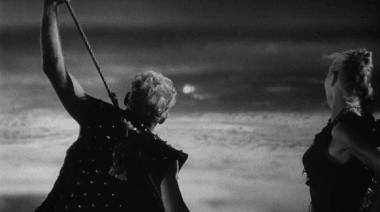


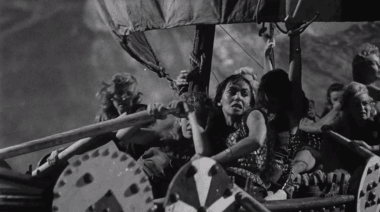

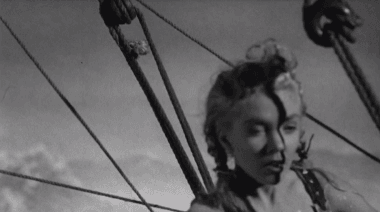
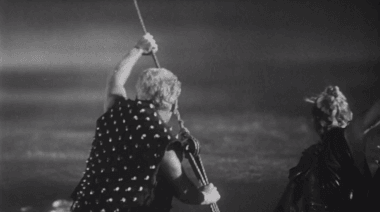
The Saga of the Viking Women and Their Voyage to the Waters of the Great Sea Serpent (1958)
#the viking women and the sea serpent gif#roger corman#the saga of the viking women and their voyage to the waters of the great sea serpent#b-movies#50s movies#50s fantasy movies#abby dalton#susan cabot#1950s#1958#gif#chronoscaph gif
260 notes
·
View notes
Photo

The Saga of the Viking Women and Their Voyage to the Waters of the Great Sea Serpent (1957)
6 notes
·
View notes
Text
The History of Norsemen, or Vikings
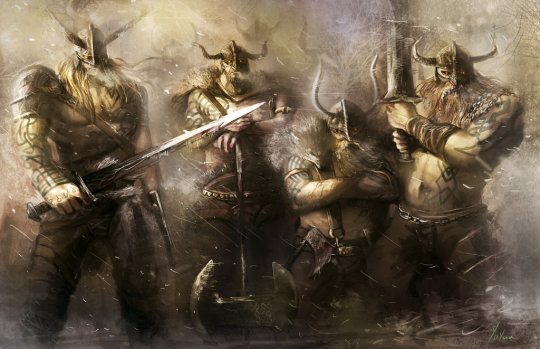
During the tenth century Charlemagne’s empire and Anglo-Saxon England were attacked by a new group of invaders known as Norsemen, or Vikings. They came from the far northern part of Europe now called Scandinavia. The tall, fair-skinned Vikings became known as brutal fighters and robbers. They spread fear and destruction throughout western Europe for several hundred years. At the same time, however, they opened up new trade routes and brought shipping skills to other Europeans.
The Vikings captured parts of Britain and France. They ruled cities in Russia and set up colonies on islands in the North Atlantic. They even paid a brief visit to North America. Those who went abroad married the people they conquered. They also accepted a new religion and customs. Others stayed in Scandinavia and set up the kingdoms of Norway, Sweden, and Denmark.
THE LAND
The Viking homeland of Scandinavia was an area mostly of forests and long, rugged coastlines. The southern part, known as Jutland, 0r Denmark, had many natural harbors. It also had large plains where the Vikings grew oats, barley, rye, and wheat and pastured their cattle, sheep, and pigs.
The rest of Scandinavia was not as well suited to farming. Winters were long and cold, summers short and mild, and the soil rocky. The coastline, however, had many fjords, or bays. So the people turned to the sea to making a living.
SHIPS AND TRADE
The Vikings built ships with timber from the dense forests and sailed out of the fjords onto the sea to make a living. The ships were large and well suited for long voyages. The bodies were long and narrow. The sides, where a single row of 16 oars was placed, were usually decorated with black or yellow painted shields. The tall bows were carved in the shape of a dragon’s head. This was supposed to frighten both enemies and the evil spirits of the ocean. The strongly sewn sails were square and often striped red and yellow. The ships bore names like “Snake of the Sea,” “Raven of the Wind,” and “Lion of the Waves.”
An awning in the forepart of the ship protected the sailors from bad weather. They slept in leather sleeping bags and carried bronze pots in which to cook their meals. Whenever possible, they cooked their meals ashore to avoid the danger of a fire on board ship.
The Vikings plotted their courses by the positions of the sun and stars. They sailed far out into the North Sea and the Atlantic Ocean in search of good fishing areas and trade. They did most of their traveling and trading in the spring after their fields were sown, or in the fall after their crops were harvested. They spent the long winters in their villages repairing their boats and weapons.
The Vikings were as successful in trade as the Phoenicians. Viking traders carried furs, hides, fish, and slaves to western Europe and the Mediterranean. They returned from these areas with silk, wine, wheat, and silver.
TOWNS, VlLLAGES, AND JARLS
Trade led to the growth of market towns in Scandinavia. These towns usually had two main streets that ran along the water’s edge. Buyers and sellers set up booths and displayed their wares along the streets. The towns were protected on their land side by mounds of earth surrounded by wooden walls with towers.
Most Vikings lived in villages scattered throughout the country. Their houses were made of logs or boards. The roots, which were made of sod-covered wood, slanted steeply to shed the heavy winter snows. Carvings of dragons decorated gables at either end. In front of each house was a small porch supported by carved pillars.
Distance and the cold winters isolated the people of one village from those of another. As a result, there was no central government. The people were divided into groups ruled by military Chieftains calIed jarls. Jarls either inherited their position or were elected to it. They saw to it that their group’s laws were obeyed. Sometimes a jarl became strong enough to take over and unite neighboring territories. When a jarl had enough territory under his rule, he was recognized as a king.
Most Viking adventurers, however, went to western and southern Europe in search of food and valuables. They disguised their ships to look like wooded islands by covering them with tree branches. Then they traveled far up the rivers to make surprise attacks. They stole goods, destroyed homes, burned churches, and killed or sold as slaves any people they captured. All Europe feared the Vikings. In their churches the people prayed, “From the fury of the Norsemen, Good Lord, deliver us!”
THE DANES
Some of the Danish Vikings Settled in the areas they raided. One group of Danes invaded England and set up settlements there. In 954 an heir of Alfred the Great forced them to leave the Danelaw. In 978 Ethelred, nicknamed the Unready, became king of England. The Danes saw their chance and began raiding England again. At first Ethelred was able to buy them off with silver. But in 1017 a Danish king called Knut, or Canute, took over the country and made it part of his North Sea Empire. Canute was a powerful but just ruler. He converted to Christianity and brought peace and prosperity to England. Soon after his death in 1035, however, Danish control of England came to an end. Some Danes left England. Those who remained became a part of the English people and culture.
DAILY LIFE
Family life was important to the Vikings. Most households contained 20 to 30 members including parents, grandparents, married children, and grandchildren. Families often fought bloody feuds to maintain their honor. The payment of fines later put an end to such feuds.
THE PEOPLE
Viking men were warriors called berserkers. They believed in a life of action and valued deeds that called for strength and courage. They fought to gain wealth, honor, and fame. They believed that a liking for war brought special honors from the gods.
To call their warriors to battle, the Vikings lit bonfires on the tops of mountains. Those who saw a fire would light a new one to spread the message. The warriors fought with battle axes, swords, and spears. Metal helmets decorated with animal figures protected their heads. Shirts made of iron rings and covered by a large cloth protected their bodies. The warriors preferred to die by their own hand rather than give their enemies the satisfaction of capturing or killing them.
A Viking groom bought his wife from her family on their wedding day. If he was not pleased with her, he could sell her. Yet the position of Viking women was quite high. They took complete charge of the home. They could attend public meetings and talk with men other than their husbands. They could own property and get a divorce. Many Viking women grew herbs which were used as medicine. All the women encouraged their men to fight.
Both men and women liked fine clothes. The men usually dressed in trousers and woolen shirts covered by knee-length tunics. Broad leather belts held the clothing in place. Sheepskin hoods and caps kept heads warm. For special events the men wore red cloaks with brooches and carried decorated swords and daggers. The women also wore tunics held in place by a belt. They covered their heads with woolen or linen caps, and wore large brooches, pins, and bracelets. Both men and women wore their hair long, and the men took great pride in their mustaches and beards. Calling a Viking man “beardless” was an insult that could be wiped out only by death.
The Vikings had no schools. Parents taught daughters such household skills as spinning, weaving, and sewing. They taught sons to use the bow and arrow and to be good fighters. The boys also memorized tales of heroic warriors and gods, and competed in games that tested their strength and endurance.
RELIGION
The Vikings worshipped many gods which at first were closely ”related to Germanic gods. In time they changed the names and activities of their gods to suit the harsh life 0f Scandinavia. The Vikings believed that the gods were responsible for the weather and for the growth of crops . Since the gods liked to hunt, fish, and play tricks on one another, the Vikings viewed them as extra powerful human beings.
The Vikings bargained with their gods to get what they wanted. Priests offered sacrifices of crops and animals on behalf of the whole community. Most Vikings also had small shrines in their homes where they could pray or offer sacrifices.
The Vikings were proud of their gods and told stories of their great deeds. These stories later became written poems called eddas. The Vikings also composed sagas, or epic stories. At first skilled storytellers used to recite sagas at special banquets. One such saga took 12 days to recite. After 1100 the Vikings wrote down their sagas. With the coming of Christianity, the people lost interest in these tales. Many were forgotten or were forbidden by the Church. Only the people of Iceland passed on the old tales.
At first the Vikings spoke a language similar to that of the Germans. In time the one language developed into four Danish, Norwegian, Swedish, and Icelandic. They were written with letters called runes, which few people except the priests could understand or use. The Vikings used the runes as magic charms. They wrote the runes in metal and carved them in bone in the hope that they would bring good luck. When the Vikings accepted Christianity, they began to write their language with Roman letters.
RAIDS AND ADVENTURERS
Scandinavia’s population kept increasing. By the end of the ninth century many Viking villages were overcrowded, and there was not enough food for everyone. Since there was no central government, the kings constantly fought one another and made life difficult for their enemies. Before long many Viking warriors began to seek their fortunes elsewhere.
Groups of warriors attacked merchant ships on the open seas. Danish Vikings began raiding the coasts of France, England, and Spain. Swedish Vikings crossed the Baltic Sea and traveled down the rivers toward Russia. They founded settlements and began to trade. They established a water route from the Baltic to the Black Sea and on to the wealthy city of Byzantium. This water route came to be known as the Varangian Route. In 862 a Swedish Chieftain named Rurik founded a Viking state that became the basis of the Russian monarchy. Norwegian Vikings established trading towns in Ireland, explored the North Atlantic, and founded a colony on the island of Iceland.
Led by an adventurer named Eric the Red, the Norwegian Vikings began to move even further west. In 986 they founded a colony on the island of Greenland. Then Eric’s son, Leif Ericson, sailed across the Atlantic Ocean and landed on the northeast coast of North America. He and his followers named the spot where they landed Vinland because of the wild grapes they found growing there. Today the area is called Newfoundland. The Vikings did not set up a permanent colony in Vinland because it was so far away from home and the winters were so cold.
SUMMARY
The Vikings lived in northern Europe in an area which is today known as Scandinavia.
The Vikings were excellent warriors, sailors. and navigators who earned their living mainly by fishing and by trading with other European regions.
The Vikings lived in villages that were basically isolated from one another. The Vikings worshipped many gods and often told stories about their great deeds.
At first the Vikings spoke one language, but over time it developed into four separate languages.
When the Vikings accepted Christianity, they stopped writing their languages in runes and began to write with Roman letters.
By the ninth century Scandinavia was overpopulated, so many Viking warriors began to seek their fortunes in other places.
In 862 a Swedish Viking named Rurik established a settlement, and that settlement later developed into the Russian nation.
In 986 Norwegian Vikings founded a colony on Greenland, and several years later sailed as far west as the northeast coast of North America.
In 1017 a Danish king named Canute conquered England, but after his death Danish control of England came to an end.
Other Danish Vikings, after besieging Paris, settled along the French coast in an area known as Normandy.
9 notes
·
View notes
Text
THE TERROR on The Schlocky Horror Picture Show
Sunday, July 27, 2008
Hello, good evening, and welcome to the Schlocky Horror Picture Show. I'm your host, Nigel Honeybone. Once upon a time, the world's second cheapest producer Roger Corman had horror film legend Boris Karloff and a leftover set for a weekend, and, not being one to miss an opportunity to avoid spending money, he made a feature film appropriately called The Terror! Actually, he made a mess, wasted Karloff's time, captured Jack Nicholson's worst screen performance ever, and puzzled movie audiences for decades. Now...it's your turn. BREAK: Dare to invade the Dark Beast's realm and see things no human was never meant to see! And then after the ads we can get back to the original wacko Jacko in The Terror! MIDDLE: Welcome back to the Schlocky Horror Picture Show, and Roger Corman's The Terror. There's an interesting tale behind the making of this cinematic fiasco, and we all know how a little trivia can brighten our lives. The story begins when the filming of The Raven was wrapping up, and Corman was looking at the gothic sets thinking that it was a shame to let them all go to waste. The cogs in the director's mind were grinding over what to do with that creepy castle set, when he realised he could film the castle interiors over the weekend and other scenes later. It was so simple! The only tiny problem with this plan was that he didn't have a script or even a story, so he called Leo Gordon, genius behind The Wasp Woman, and explained that he needed scenes to shoot immediately and the rest of the plot could be sorted out later. Now all Corman needed was actors for this evil experiment. He already had Boris Karloff handy, and a name like that was sure to attract a stellar cast. Dick Miller may not be stellar, but he was available and agreed to play Walter Paisley...I mean the servant, Stefan. We've seen him before in A Bucket of Blood and Little Shop of Horrors, so if you don't know everything about him down to his shoe size by now I can't help you, except to say that he's been a taxi driver or shopkeeper in just about everything. And he directed an episode of Miami Vice, but if you can't say something nice about someone... Gustav the part-time mute was Jonathon Haze, another Corman regular who was in Little Shop of Horrors, Teenage Cave Man, The Saga of the Viking Women and Their Voyage to the Waters of the Great Sea Serpent, and Not of This Earth. He was last heard as a voice actor on the cartoon "The Angry Beavers". Dorothy Neumann, who first met Corman playing Meg Maud in his 1957 take on reincarnation The Undead, here plays the crone Katrina, only this time she's not so good a witch being all out for revenge. All of this is great fun for absinthe-guzzling film fans like yours truly. The lead role, Lt. Andre Duvalier, is played by a young Jack Nicholson, who Corman managed to convince to hang around after also appearing in The Raven. He was still about a decade away from making his first really good dramatic film, Five Easy Pieces, but you can see flashes of the talent that would make him the megastar he later became. Knowing how rich and famous he is doesn't make watching this any easier. Only lacking an actress for the role of...well, it's a bit ambiguous really...Jack suggested that his wife might now have a free weekend. She was Sandra Knight, a bit part actress in many television shows of the sixties and a few horror films including Corman's Tower of London. Not long after this her career went into a sharp decline, which oddly enough coincided with her divorce from Jack. To say the two-day shoot was a challenge to everyone involved is an understatement. The actors were not sure of their character's motivations due to the roughed out story line, so nobody knew what was going to happen to them. Corman kept shooting through those two days on that castle set not even bothering to slate some of the shots or cut the camera. However, he eventually came to the realisation that he needed more of a movie. So Corman hired an obscure young director by the name of Francis Ford Coppola to shoot some scenes around the
beach for a couple days, which in true Coppola style turned into eleven days. Coppola then had another job offer from Ray Stark's company Rastar, which he wisely accepted, so Corman had to find someone else. Coppola's suggested film student Dennis Jakob. Jakob filmed some shots that would be used at the film's finish, and in exchange then used Corman's equipment to film a Civil War movie for his thesis. Since Jakob had to go back to his studies and the film still wasn't fitting together properly, or indeed at all, Corman got Monte Hellman to shoot some scenes on the cliffs in Palos Verdes, changing some things in the script along the way. However, before long Hellman was offered a better job, so Corman brought in Jack Hill to film some scenes to bring the movie together. With just one day of shooting to go, Hill left. By then, Nicholson had requested to direct part of the film and Corman, probably out of sheer frustration, granted his wish. Gee, so much work for a so-called quick and easy movie! Here we have a hodgepodge of directors and their different interpretations of a script being written as the footage was shot. Somehow something had to be done to make some sort of sense to it, so a plot twist was created. Does it work? Wait and see. There are many confusing things. What about the cradle in Ilsa's room? Why did "mute" Gustaf speak? Why did Mrs. Bates make a cameo in the start of the movie? Why on Earth are TVS playing this movie? Well, I should know the answer to that last question by now, shouldn't I? In its own way this was a template for recent cinema: a mix of grand visual styles without a decent script or plot. If you're confused, don't feel bad, it's a natural consequence of watching The Terror. It saddens me to hear people straight out of Film Appreciation school trying to say something sophisticated and intellectual about a Roger Corman movie. That's not what they're for. What they were for was fun. They were for Drive-In Movies in their heyday, and late-night community television fare now that nobody else will play them. What they were was absurd, escapist entertainment. Having got that off my chest, I'll now return you to the musty patchwork quilt that is The Terror. CLOSING: All things considered, The Terror turned out much better than it had any right to, which is to say that it's not totally unwatchable. By this point in their respective careers, Corman and Karloff could do this sort of thing in their sleep, and possibly did in this case, and their unshakable self-assurance goes some way toward making up for the movie's almost innumerable faults. They can't disguise the complete lack of a pre-planned story, however, nor paper over the fact that none of the pieces of what eventually came to pass for The Terror's script quite fit together. We'll try to play something a bit better thought out next week, but no promises, as we expose you to another lethal dose of the public domain on the Schlocky Horror Picture Show. Toodles!
by Lushscreamqueen
0 notes